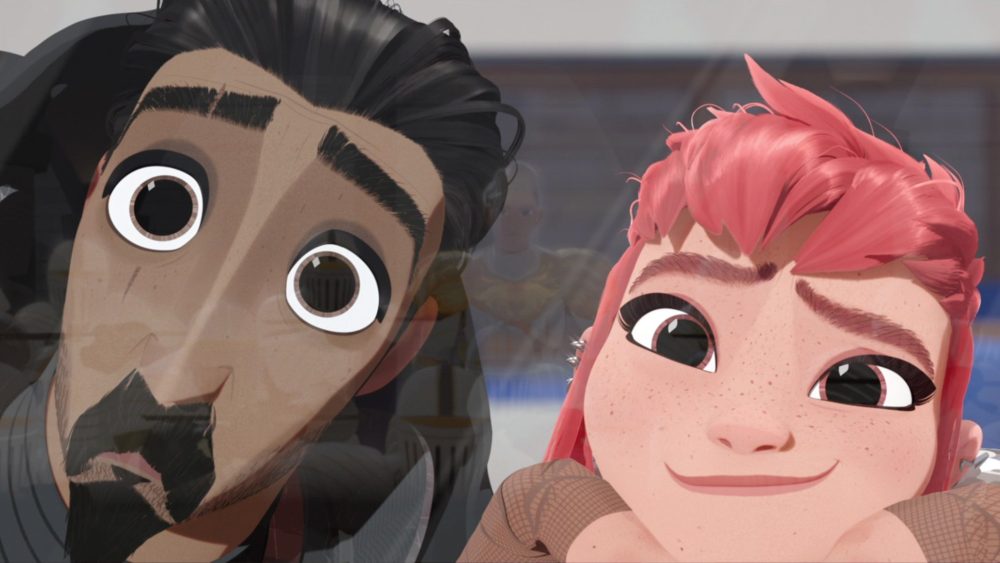How ‘Nimona’ Overcame Studio Closures and Entered the Oscar Race
“Nimona,” Netflix and Annapurna Animation’s Oscar-nominated film, is a compelling tale of passion, resilience and searching for community — both on and off the screen.
When brave knight Ballister Boldheart (Riz Ahmed) is falsely accused of assassinating the queen, he teams up with the chaotic, shapeshifting teenager Nimona (Chloë Grace Moretz) in the hopes of clearing his name and bringing peace to the kingdom.
Nimona and Ballister’s quest closely echoes the long journey of the film’s producers, who overcame seemingly insurmountable obstacles — not only to bring the film to screens, but all the way to the Academy Awards.
Nobody relates more than producers Karen Ryan and Julie Zackary, who have been attached to the project for nearly a decade. Originally conceived at Blue Sky Studios in 2016, the animated production first hit a speed bump in 2018 with Disney’s acquisition of 20th Century Fox.
“We were working on it at Blue Sky and it was incredible. It was going really well. The entire studio was rallying behind this. Then Fox was acquired by Disney,” Ryan recalls. “Movies can get pushed and pulled by the new people coming in. My role was about protecting it and just keeping it about the themes. We were trying to make this film feel personal and not get lost in that shuffle of the transition.”
The “Nimona” team faced pushback from Disney on the film’s queer representation, including a kiss between Boldheart and boyfriend Ambrosius Goldenloin (Eugene Lee Yang). And that wasn’t their only roadblock.
“We were in the middle of COVID. Disney was hemorrhaging money. We knew that the parks weren’t making money. The hotels weren’t making money, the cruise lines and movie theaters — everybody was hemorrhaging money,” Zackary says, adding that they didn’t get a heads-up when Disney ultimately shuttered the studio in early 2021.

Karen Ryan and Julie Zackary
Courtesy
Ryan recalls a 400-person Zoom call in which the crew watched their hard work, sure it would never be seen by the public. “There were tears. We were crying and laughing because we had this movie that meant so much.” But that emotional Zoom ultimately lit a fire to save the film.
“In that moment, we were just like, ‘We’re not going to take no for an answer. We’re not going to let this die.’ And that’s when we shifted from a major studio film into a tiny little independent company,” Ryan says.
Leveraging their extensive industry networks and adept negotiation skills, Ryan and Zackary orchestrated the revival of the project, ultimately securing a deal with Annapurna Animation in 2022.
Transitioning from Blue Sky to an independent studio brought its share of growing pains, Zackary says. “None of us had done it outside of a big studio. We had the support of Annapurna, who were wonderful, and also could help us in all the questions that we had. But there was a lot of learning on the job: How do you book an orchestra? How do you arrange post? What does your delivery schedule look like?”
Of course, the tenacious team worked past the difficulties, and the film ultimately premiered on Netflix in June 2023. “It’s this crazy story of what tried to keep us down and how people refused to let it die,” Ryan says with a smile.
When the team found out they were Oscar-nominated, Ryan and Zackary couldn’t believe it. They say they’re proud that the nomination signals industry acceptance of the film’s queer themes in children’s and family entertainment.

©Netflix/Courtesy Everett Collection
“Now there’s a whole movie about trying to make people feel represented, especially queer kids out there who don’t see themselves on screen,” Ryan says. “This movie is doing it. Its Oscar nomination means. ‘You are supported. We see you. We want more of this. And we’re celebrating it.’”
“It was so important to make a reflection of the world that we lived in,” Zackary says. “There’s no there’s no painting it with any other stroke than, ‘This is normal. This is the world that you live in.’ We’re not going to make a big deal out of it, because that’s the way that it should be.”
They hope to expand on the theme of acceptance in their future projects – whether that be more “Nimona” or something new. “We’re mostly focused on making more stories that represent people who need to be seen,” Ryan says. “We want to use our efforts to create more films that make the world a better, kinder place.”

